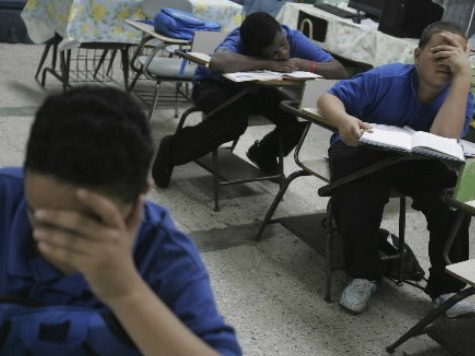Teaching immigrant children the English language will cost taxpayers a staggering £244 million this year, up from £204 million just three years ago. The figures released by the Department of Education reveal the scale of the problem that schools face in teaching children for whom English is not the native language.
The majority of the funding is spent in Primary schools, who will receive £190 million in 2014-15, whereas Secondary schools will spend £54 million. The money is being spent on teachers who specialise in teaching English as a foreign language, bilingual teaching assistants, and even translators for parents’ evenings, the Mail on Sunday has reported.
And as recent figures show that the number of school children using English as a second language has soared by a third over the last five years to 1.1million, some schools are investing in separate classes for non-English speakers, in which they concentrate on developing their spoken and written English to a standard which enables them to join lessons with fluent English speakers.
Despite the measures, there are fears that native English speakers are losing out. One London teacher told the Mail “It has become something of an unwritten rule in many classrooms that non English-speaking immigrant children are the teaching priority.
“Mostly, they are great kids – they’re full of motivation and determination and they’re desperate to succeed in this country. Invariably, once they master the English language, they go on to do really well. I have never really felt too concerned about them. Eventually they become a success story.
“My worry is over the native English-speaking kids who are getting left behind because we do not have much time for them. These days we have no choice but to dumb down the language we use in lessons to accommodate the needs of non-English speakers.
“For immigrant, non English-speaking children this must be the best country in the world to attend school. How sad it is that in many of those schools, pupils who are native English speakers have become a low priority group.”
Last year there were 240 schools at which 90 percent or more of the students did not have English as a first language. In five schools, not a single pupil was a native English speaker. And there has been a huge influx of pupils from Eastern Europe over the last five years, nearly tripling from 44,000 in 2008 to more than 123,000 by 2013.
The Romanian language recorded the fastest growth, up 527 percent over five years. Latvian followed, up 414 percent. Polish increased by just 136 percent, but recorded the largest number of speakers at 62,275. In total, the number of non-English, Irish or Roma white children hit 313,000 this year, up from 72,000 in 2010.
Professor Alan Smithers, the director of the Centre for Education and Employment Research at Buckingham University, said: “The teaching of English to pupils from abroad is taking up a large chunk of money at a time when expenditure on education is severely constrained, placing extra stress on our schools.
“This is of great concern to parents. I know of parents who are so concerned about the impact of large numbers of pupils from abroad on the education of their own children that they have taken steps to move them to schools where they can concentrate on their studies without the distraction of non-native speakers.”
The influx of non-English speaking pupils is also of concern to the teaching unions. A National Association of Head Teachers spokesman said: “Gaining a rapid understanding of English is vital to help those children integrate in the classroom so that they can learn along with their peers.
“Children who do have English as their first language are also well served by this approach because it means that their learning isn’t compromised by classmates who are struggling long-term with the language barrier.”
Schools are already struggling thanks to the rising birth rate, fuelled in part by high birth rates within immigrant families. Romanian women living in the UK have on average 2.93 children, whereas their British counterparts have 1.84 children on average. Official estimates place the number of new school places required over the next decade at one million, and the government has pledged £5bn by 2015 to provide more school places.
Earlier this month, during a radio interview, the Work and Pensions Secretary Iain Duncan Smith said that the character of schools was being altered by the influx. New arrivals in communities are “‘literally change the schooling because so many people arrive not speaking English,” he said.

COMMENTS
Please let us know if you're having issues with commenting.